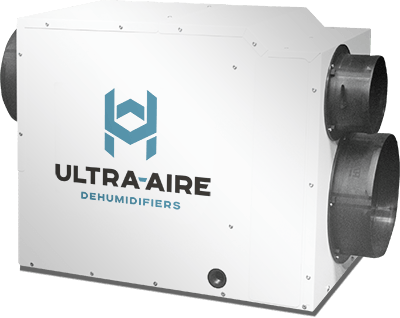4 Reasons Why Dehumidification is Essential to Your Kentucky Home:
Comfort
High humidity can cause us to feel either hot and sticky or cold and clammy and also contributes to smelly odors in the home. When we lower the temperature of our air conditioning to combat that “sticky” feeling, the results are “cold and clammy.”
 Most of us think high humidity occurs only during the summer months, but, in fact, the most important times of the year to address humidity issues are actually in the spring and fall when temperatures are moderate (air conditioning is not needed) and outdoor humidity levels are high. Ultra-Aire Whole House Ventilating Dehumidifiers address all of these uncomfortable situations effectively and efficiently and will make your home comfortable year-round.
Most of us think high humidity occurs only during the summer months, but, in fact, the most important times of the year to address humidity issues are actually in the spring and fall when temperatures are moderate (air conditioning is not needed) and outdoor humidity levels are high. Ultra-Aire Whole House Ventilating Dehumidifiers address all of these uncomfortable situations effectively and efficiently and will make your home comfortable year-round.
Did You Know?
- According to the Environmental Protection Agency, for maximum comfort, indoor relative humidity (RH) should be maintained between 35% and 50%.
- Indoor humidity cannot be effectively or efficiently controlled with an air conditioner/cooling system alone. Air conditioners are designed to cool a home based on a temperature setpoint, dehumidifiers’ focus solely on removing humidity.
- Using an Ultra-Aire Whole House Ventilating Dehumidifier will allow you to precisely control the indoor humidity levels of your entire house and greatly increase the comfort levels of your home.
Health
 According to the Environmental Protection Agency, health problems associated with poor indoor air quality include eye irritation, allergies, headaches and respiratory problems, such as asthma. These problems can be directly related to the presence of mold, high volatile organic compound (VOC) levels and dust mite infestation in the home. The recognized solutions to addressing these health issues are moisture control and ventilation. Ultra-Aire Whole House Ventilating Dehumidifiers greatly reduce the risks of these serious health issues through superior filtration, fresh air ventilation, and moisture control.
According to the Environmental Protection Agency, health problems associated with poor indoor air quality include eye irritation, allergies, headaches and respiratory problems, such as asthma. These problems can be directly related to the presence of mold, high volatile organic compound (VOC) levels and dust mite infestation in the home. The recognized solutions to addressing these health issues are moisture control and ventilation. Ultra-Aire Whole House Ventilating Dehumidifiers greatly reduce the risks of these serious health issues through superior filtration, fresh air ventilation, and moisture control.
Did You Know?
- According to the American Academy of Allergy, Asthma and Immunology to reduce dust mites, it is important to keep humidity below 50% throughout the home by using a dehumidifier.
- According to Partnerships for Advancing Technology in Housing (PATH), filtering and dehumidifying fresh air before it is delivered to the living area of the home may reduce the potential for triggering or aggravating allergies and respiratory ailments.
- According to an American Lung Association poll, nearly 75 percent of Americans live with someone who has allergies, asthma, emphysema or another respiratory illness.
Green Living
 A “green” home by definition uses less energy, less water, fewer natural resources and offers better indoor air quality. While building practices have improved over the last few decades, the results have lead to tighter homes and poor indoor air quality. Airtight and well-insulated building construction restricts air infiltration from the outside, which allows pollutants and moisture levels to accumulate inside. Most green building standard programs incorporate energy-efficient elements of whole house dehumidification and ventilation. Ultra-Aire Whole House Ventilating Dehumidifiers are ENERGY STAR® Rated and bring in the right amount of fresh, filtered air while maintaining proper humidity levels throughout the entire home.
A “green” home by definition uses less energy, less water, fewer natural resources and offers better indoor air quality. While building practices have improved over the last few decades, the results have lead to tighter homes and poor indoor air quality. Airtight and well-insulated building construction restricts air infiltration from the outside, which allows pollutants and moisture levels to accumulate inside. Most green building standard programs incorporate energy-efficient elements of whole house dehumidification and ventilation. Ultra-Aire Whole House Ventilating Dehumidifiers are ENERGY STAR® Rated and bring in the right amount of fresh, filtered air while maintaining proper humidity levels throughout the entire home.
Did You Know?
- Properly controlled humidity levels will allow the homeowner to raise the thermostat setting in the summer while maintaining comfort. This can provide significant energy savings.
- According to LEED for Homes, controlling indoor moisture levels provide comfort, reduce the risk of mold & allergens, and increase the durability of the structure of the home. In hot and humid climates, dehumidification can reduce the energy demands associated with air-conditioning.
- According to the Home Ventilating Institute, a tighter, well-insulated home can save energy, increase comfort for its occupants, and create an opportunity to manage indoor air quality (IAQ). Maximum benefits can only be achieved through the careful selection of materials and the proper use of mechanical ventilation.
- According to the Environmental Protection Association, homebuyers today are increasingly concerned about the poor indoor air quality and the presence of high VOC levels in their homes, including mold, radon, carbon monoxide, and toxic chemicals.
Protect Property
Maintaining proper humidity levels is one of the most important steps in protecting a home and its contents. Excess moisture in the home can cause damage to wood floors, furniture, artwork, electronics, and even the overall structure of the home. It can also provide a breeding ground for cockroaches, termites, and other damaging pests.
Moisture in the home comes from many sources: people, pets, plants, cooking, washing, groundwater, and infiltration of outside air. Dehumidifiers are vital for humidity control, especially in areas where humidity can rise above 50 percent naturally, such as basements, crawlspaces, attics, as well as high humidity regions in the U.S. Ultra-Aire Whole House Ventilating Dehumidifiers are installed as part of the home’s heating and cooling system and will properly maintain humidity levels throughout the house, regardless of outside weather conditions, year-round.
Did You Know?
- According to the Environmental Protection Agency, the ideal relative humidity range for the home is between 35–50 percent. At this range, your home is protected.
- Pests can be hazardous to you, your family and your pets. High moisture encourages wood decay making it easy for pests to penetrate and establish colonies, which create infestation.
- Mold caused by water from excessive humidity, leaks, condensation or flooding, is considered maintenance for the property owner, like termite or mildew prevention, and is not covered by homeowner property polices, according to Insurance Information Institute.
